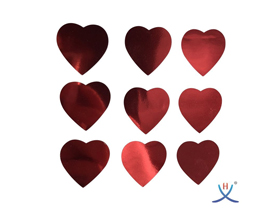The History Of Confetti
When you have been in the confetti business like us for so long, the same problems will often come up again and again. It seems that although people like to throw confetti, they often don't really understand how this kind of thing is formed.
The History Of Confetti
"Why do we use confetti in celebrations?"
"Why are confetti usually made of paper?"
"Who invented confetti?"
When you have been in the confetti business like us for so long, the same problems will often come up again and again. It seems that although people like to throw confetti, they often don't really understand how this kind of thing is formed. This is really a shame, because this is actually a very interesting story.
So, friends, get ready: today, we are going to give you a crash course in the history of confetti! Blow molding chairs will share this article with you.
Confetti passing time
The history of throwing confetti can be traced back to ancient Greece. The custom of phyllobolia is to sprinkle leaves and petals on people on special occasions such as weddings or returning home. This is also a way of recognizing the winners of sports competitions. In general, this is an interesting and eye-catching way, and it may also be related to fertility rituals.
Fast forward to Milan, Italy in the 13th century. Around that time, nobles and aristocrats—or at least their attendants—threw coins, nuts, candies, flowers, and even eggshells full of perfume at people who "worship" them along the street. This is done to excite onlookers and create a festive atmosphere. This may also be a strategic public relations initiative. Unfortunately, lower-level members don't always appreciate this gesture; in the face of radical class differences, all this may seem quite absurd and condescending.
As a result, retaliatory behaviors of bystanders throwing mud and rotten eggs at parade participants have become more and more common. Occasionally, fighting broke out between rival factions or regions, and even more dirty artillery shells were thrown around, exacerbating the chaos. Things got very bad. In 1597, Mayor Juan Fernández de Velasco ordered the prohibition of throwing eggs, spilling liquids on the streets, and other historical customs related to improper behavior in demonstrations.
For about a century, people have complied with this ban, and trinkets such as confetti or food were not distributed during the parade. However, in the 18th century, this custom changed slightly: the participants in the parade did not throw eggs or coins at the audience, but small candies and seeds. Sugar is especially popular during carnivals. When candy is prohibitively expensive, people use chalk balls instead of candy, because chalk is cheap, relatively safe to throw, and most of them will not offend others. By 1808, chalk bombs were the only thing allowed to be thrown in the parade—again, because of its harmless nature. But a few years later, the chalk ball fights between revellers intensified, so much so that the use of chalk balls was banned. The citizens' reaction was to start throwing dirt again.
Most importantly, since ancient times, people have had an urge to throw things at each other in a celebratory (or noisy) way. For some reason, parades and special events just amplify this feeling. Obviously, the people attending the party need something to fill this gap, but this "thing" must be small, flashy, and lacking destructiveness. In 1875, a Milanese businessman named Enrico Mangili started selling confetti made from small pieces of paper, and he cracked the code.
Modern day paper confetti
Confetti, in its modern form, exists as a by-product of the sericulture industry. In the Manjili era, silkworm farmers would spread thick perforated paper on the habitat of silkworms; when the larvae hatched or shed their shells, the edges of the holes in the paper would stick to their eggs or skins, helping them to move faster and more quickly. Twisted out cleanly. However, in the process of manufacturing perforated paper, tiny paper discs are naturally produced. In a place where others see it as rubbish, Manjili saw an opportunity. He began to sell the discs in bags, treating them as stupid and safe things and throwing them at ordinary citizens during the carnival. The public embraced the product with open arms-no exaggeration.
Today, revellers use confetti in various celebrations. Like the ancient Greeks, we tend to shower newlyweds and winning athletes, using small pieces of light material to express our good wishes. However, people living in that era almost certainly did not expect that one day people would replace leaves with brightly colored dots or square paper. We also suspect that even Enrico Mangili did not expect it. The invention of the confetti cannon!
The truth is this: you don't need to know the historical origin of confetti, to know that throwing confetti on special occasions is a super fun thing. This is also the beauty of confetti; it is useless except for festivals and decorations. At the same time, it also makes sense to delve into the origins of "modern" objects that we usually take for granted.
The next time you go to a gender reveal party, you see a balloon exploding into blue or pink confetti. Take a moment to appreciate it. A few centuries ago, the same celebratory idea might inspire your hostess Her guests threw sugar plum candies. Next time you usher in the New Year, when someone throws confetti at you, you should be thankful that they didn't throw a chalk ball at you!
